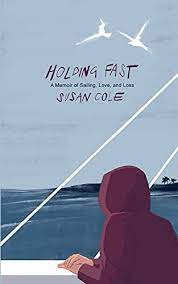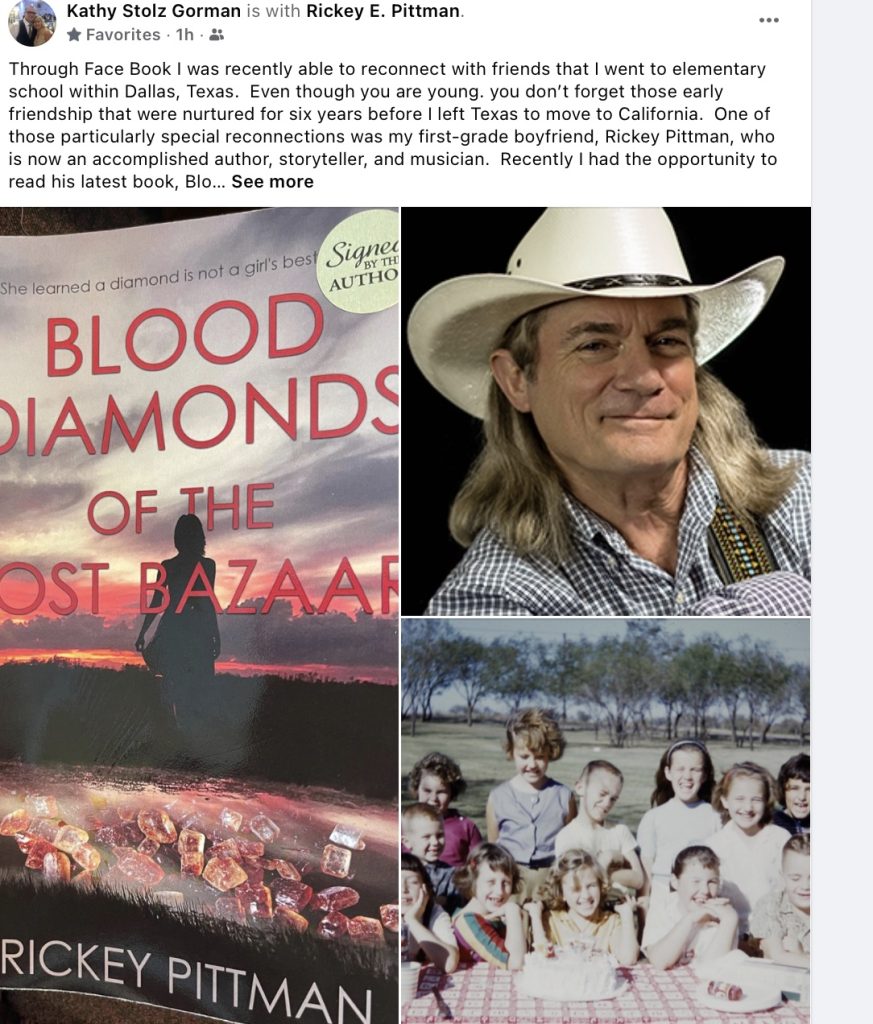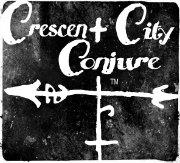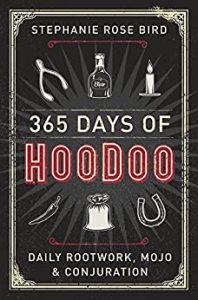
Review of Erin Rovin’s Children’s Books by Rickey Pittman



The Lady Bugs and the Trans Gym Queens Soccer Match by Sir Gullible of Ireland.

My name is Sir Gullible. I am a direct descendent of Sir Gulliver of Ireland. I’m sure you have heard of my ancestor’s adventures. Tales of his journeys inspired me so much that I decided that I must go to Amerikay on a quest of my own.
I was in awe of what I found in New York City. After walking several blocks past tent cities of homeless people and too many sleeping on the street, I was only mugged once, and I was told by a policeman I complained to that I was one of the lucky ones. I maneuvered my way through discarded needles and feces and decided I had seen enough. I had heard there were still plenty of NORMAL places in America, so after renting a car, I began my drive across Amerikay, starting with up-state New York, to see the real America.
In one city, I bought a ticket for a university girls soccer team who had a table in front of the grocery. As a European, I had always enjoyed futbol (soccer) more than the American sport called football. So, I bought a ticket for the game that would be played later that afternoon in a nearby sports park. The contest was between two teams: The Lady Bugs and the Trans Gym Queens. I was a bit puzzled by the team names.
At the park, I sat in the stands with the Lady Bug crowd, fans, mothers, fathers and grandmothers. The Lady Bug team came out, dressed in traditional red and black soccer uniforms and were greeted with applause and cheers from the crowd. In front of the bleachers were a small group of cheerleaders with cute little bows in their hair. TheyI th led the spectators in familiar and encouraging cheers. A mascot, who was at least six-feet tall, was decked out in a fine ladybug costume. He carried a bullhorn and joined the cheerleaders in stirring up the crowd.
However, the raucous audience on the other side, cheering for the Trans Gym Queens was much different. The audience waved Rainbow and LGBTQ flags and held up signs of support. I thought some of the wording on the signs was crude and politically charged. Hair was dyed in all kinds of wild colors and arms and flabby legs covered with esoteric tattoos. Nearby, I saw CNN and ESPN reporters filming. I wondered what they really thought about the audience.
When the Trans Gym Queen team ran onto the field, I gasped. The team members were tall—none under six feet. Most had bright bows clamped to their cropped or long flowing hair, heavy makeup, five o’clock shadows on their face, and the Adam’s Apples bobbing in their throat made me feel like I was watching Pelican eat fish. One reminded me of Piltdown Man. Some of the Queens had unshaved legs. In contrast to the typical soccer uniform of jersey, stocking, and shorts, the Trans Gym Queens were dressed in knee-length dresses and skirts, like you would have seen in women’s sports many years ago.
When the match started, the Lady Bugs won the first toss, and quickly kicked the ball so that their forwards had a quick and clear path to the goal. Lady Bugs 1, Trans Gym Queens 0.
However, the momentum of the match quickly changed. When a Lady Bug shouted, “Get out of the way, freak!” the trans ref gave her a yellow card. And as the Queens charged forward, they butted heads, and knocked Lady Bugs to the ground with impunity. Obviously unfair, the refs gave the Lady Bugs penalty after penalty, but even though the Lady Bug fans expressed their displayer, the game moved on. I could see where this was going. I knew the Ladybugs had no chance of winning. Though I had been a soccer coach in Ireland for both boy and girl teams, I could not read how the refs felt about this game or the Trans Gym Queens. However, I had some insight when the female coach of the Ladybugs complained rather loudly, she was ejected from the game, so I suspected the refs had a bias.
The ejection of the coach seemed to completely demoralize the Ladybugs and they stood on the side in stunned silence. When the game resumed, they put up little resistance to the Trans Queens, who continued their aggressive, bullying behavior and scoring point after point.
This made me feel rather sad for the Ladybugs. The size and strength of the transgender team was a serious and unfair advantage. I thought for a normal biologically correct team wo women to oppose a whole herd of biological males would be like a lone swimmer fighting a tsunami. This one-sided game caused me to reflect on the transgender issue in America or the UK: I wondered why no one is making comparisons or learning from The Island of Dr. Moreau and the themes of human identity and the consequences of human interference with nature and reconstructing women’s sports so that girls had to compete against males.
The Queens lined up and began to heckle the Ladybug fans. The Ladybug mascot threw down his bullhorn and marched out to the Queens and chewed them out. One made the mistake of throwing a punch at the mascot. The mascot decked his attacker. This angered the other trans-Queens, so they all screamed and rushed at the mascot who had dared to stand up to them. The mascot must have been trained in martial arts because instead of allowing the group of trans-Queens to circle him, he moved around so that he lined them up and only faced one at a time. And one by one, the Queens fell to the ground. To the rousing cheers of the audience, he danced around with his hands in the air like a victorious boxer.
I learned something about Amerikay that day: Though America’s culture is changing, and those on the WOKE progressive side in America’s Culture War seemed determined to silence those who disagree and dominate and control them, and force others to accept deviant behavior. Today, it only took one Ladybug mascot to teach these trans bullies a lesson and to show they haven’t won yet.
I wonder what other strange sights I would see in this troubled America as I continued my journey. Stay tuned!
Sir Gullible
I have taught courses online since 2007, including freshman composition 101 & 102, American Lit, British Lit, and fiction. At first, I was teaching online and land-based classes, but I had to let the land-based classes go as I was traveling so frequently for my music gigs, author events, and my Songs & Stories programs for schools, libraries, and festivals. I kept the online classes as they are portable work but still would keep me connected to the colleges and to literature. I have worked with four colleges so far and currently, work only for the University of Louisiana at Monroe and Louisiana Delta Community College.
Teaching online has required me to improve my computer skills and to improve my classes so I can best teach my classes of young scholars. This semester I was pleasantly surprised by the great essays I received for an assignment for them to choose a short story to analyze and respond to. Here’s a list of their choices: (Note that most of these are not the usual stories they encountered in English class. The // marks indicate that more than one person chose that same story. Many of these I have added to my own “to read” list)
Rebekah Jordan, “Unseen”
Ann Hart, “The Friday Everything Changed.”
Kylah Adams, “I Know Better”
Son Bo-mi, “The Cat Thief”
Anton Chekhov, “The Bet” “Vanka”
Jack London, “To Build a Fire”
Hans Anderson, “The Emperor’s New Suit”/ “The Little Mermaid”
Ray Bradbury, “A Sound of Thunder” “The Pedestrian” “There Will Come Soft Rains” // “All Summer in a Day”. “The Flying Machine” “The Murderer” “The Veldt”, “Kaleidoscope” “The Last Night of the World”
Shirley Jackson, “The Lottery”// “Charles”
Kate Chopin, “Desiree’s Baby” “The Story of an Hour” “The Night Came Slowly” “The Storm”
Ursula le Guin, “The Ones Who Walk Away from Omelas” //
Liam O’Flaherty, “The Sniper” //
Jacob and Wilhelm Grimm, “Little Snow White”
Aknier, “The Mountain”
Richard Connell, “The Most Dangerous Game”//
Robert Cormier, “The Moustache”
Louis L’Amour, “The Daybreakers”
Harry Harrison, “The Stainless Steel Rat”
Edgar Allan Poe, “The Tell-Tale Heart”// “The Black Cat”. “The Murders in Rue Morgue,” “MS. Found In A Bottle”
Kaoru Sawada, “Hanging Heads” //
H.K. Lovecraft, “The Outsider”
Stephen King, “Nightshift”. “I am the Doorway”
Ted Chiang, “Exhalation”
Isaac Asimov “The Fun They Had”. “Nightfall” “Robbie”
Katy Clements “Hallucinations”
Ernest Hemingway “Hill Like White Elephants”
O’Henry “Gift of the Magi”
Yann Martel, “We Ate the Children Last”
Gina Berriault, “The Stone Boy”
Stephen Crane, “The Bride Comes to Yellow Sky”
Philip K. Dick “The Eyes Have It”
Charles Dickens, “The Child’s Story” “What Christmas Is As We Grow Older”
Roald Dahl, “Lamb to the Slaughter”
Leon Rooke, “A Bolt of White Cloth”
Robert A. Heinlein “All You Zombies”
Katherine Mansfield, ‘A Garden Party”
Jorge Luis Borges “The Library Of Babel”
Raymond Carver “What We Talk About When We Talk About Love”
Jamaica Kincaid “Girl”
Thom Brodkin “Silence” (not a classic, submitted to a contest)
Chris Crutcher, “The Pin”
Thomas Bulfinch “The adventures of Hercules”
Jules Verne, “Year 2889”
Chris Crutcher “Goin’ Fishin’“
Guy de Maupassant “The Diamond Necklace”
Henry Van Dyke “A Handful of Clay”
Kurt Vonnegut “ 2 B R O 2 B”,
Flannery O’Connor,“Good Country People”
Mary Shelly “The Mortal Immortal,”
“Jayhawker Hill” a poem by Rickey Pittman, Bard of the South
On the West Bank of the Ouachita,
Somewhere in Caldwell Parish,
Jayhawker Hill’s is in piney woods,
Where many a man did perish.
You better stay away
From Jayhawker hill,
Something evil sleeps there,
And haunts those woods still.
Some Jayhawkers are buried there,
Those hanged or shot down,
Their ghosts whisper of buried gold
Wealth that’s never been found.
A hundred men or more,
lived there beyond the pale,
Fierce, violent, bloody men,
Who followed the hoot-owl trail.
Draft dodgers and deserters,
Free men and former slaves,
Outlaws in a no man’s land,
Mercy they seldom gave.
Yes, I’m a jayhawker,
I’ve killed many a man,
Stolen horses, guns, and gold,
Every chance I can.
I’ve killed men when they resist,
Women and children too,
Remember that if I come your way,
So bad don’t happen to you.
I’ll hide from the Rebs,
If they try to root me out,
I’ll simply vanish in the swamp,
My favorite hideout.
I don’t play no favorites
So I torment Yankees too,
I steal their horses and rob patrols,
And sometimes I’m dressed in blue.
Jayhawkers are men of few words,
But we know what to do,
After raiding farms or travelers,
We vanish by horse or canoe.
You better stay away
From Jayhawker hill,
Something evil sleeps there,
And haunts those woods still.
R. Pittman–Jan. 2023
A Reader’s Response to Holding Fast: A Memoir of Sailing, Love, and Loss
by Rickey Pittman, Bard of the South
Writing a memoir is a delicate and sometimes tricky task for a writer. I’ve always enjoyed reading biographies of writers, and their memoirs. This month, I discovered Holding Fast: A Memoir of Sailing, Love, and Loss by Susan Cole, and in my opinion, Ms. Cole has created one of the finest memoirs I’ve ever read. It is an award-winning memoir, including being a finalist in the IAN Book of the Year Award in the Travel/Nature category. It has received many positive and impressive reviews. My method in this short review is to submit my own thoughts in a reader-response approach and reveal why I so enjoyed the memoir.



About Susan Cole:
You can find her on Facebook. Her website is https://www.susan-cole.com/index.htm I encourage you to visit and explore it to learn more about her life and her other writing accomplishments.
Cole, Susan, Holding Fast: A Memoir of Sailing, Love and Loss. White Bird Pub. 2021.
A few years ago, the North Louisiana Arts Council hired me to write a play for Madison Parish. The play was written but was not produced due to state funds changing with elections and some deaths of parish administrators. I was going to call the play Tallulah, in honor of a Tallulah, a young lady in the 1800’s who was the love of the life of the engineer who built the railroad from Vicksburg to Monroe. I’m preparing to present a program on the Louisiana Jayhawkers on Tuesday, January 10th for the Thomas McGuire Camp of the SCV. My preparation reminded me of my Madison Parish play and a scene about the Jayhawkers in that region that terrorized Southerners and even the Yankees. Here is Scene 10 from that play. I hope you enjoy it. If you do, drop me an email at rickey p at bayou. com or FB message.
Scene #10: The Jayhawkers
Characters:
Big John, a big and strong black man, fleur-de-lis brand on chest.
Justin, a young Confederate soldier
Benoir, a French trapper-squatter
Mary Jane Jackson – Nickname, “Bricktop” red hair
Fred: an experienced Jayhawker.
(Fred and Justin are on stage, cleaning guns or sharpening knives, etc. Other characters appear as scene progresses)
FRED: You’re kinda young, ain’t ya?
JUSTIN: I’m 17, as much a man as most of the others that been fighting. Yeah, joined the glorious cause, then had to leave cause I shot our Lieutenant in the back at the battle of Milliken’s Bend. Drug him off in the bushes, then skedaddled. I’ll probably be reported missing. We was doing real good till the Yankee gunboats started blowing us to smithereens. Glad I could hook up with you Jayhawkers. I thought for a minute you was gonna shoot me.
FRED: No one comes out here round Willow Bayou alone lessin he’s running. We can always use another good man. Least you had enough sense to not throw away your gun like some of the others did when they deserted. We got about 130 with us now. Gettin plum crowded. Some of the boys are gettin tired of livin in these canebrakes.
JUSTIN: Beats getting shot at by the Yankees and being marched till our feet bleed fighting this rich planter’s war. Nothing to eat but ground up corn cobs and molasses. You the leader, here?
FRED: Naw. You see that black man there? That’s Big John, a runaway slave. He’s the leader. Strongest man I ever seen. Good and quick with a knife too. Cut you in a minute. He don’t put up with no nonsense, so don’t give him a hard time.
Benoir there is a Cajun from a family of bear hunters and trappers. Keeps us in meat real good. Kinda on the lazy side bout other things though.
JUSTIN: Who’s that red-headed woman?
FRED: That’s Bricktop. Her real name’s Mary Jane Jackson. Made a real good living down in Storyville till she started killing customers that got her dander up. New Orleans had her in jail, then when the Yankees took over, they pardoned all the felons, so she disappeared and somehow made it up here with us. Hey Bricktop, come over here. Got someone I want you to meet.
BRICKTOP: Hey, darlin.
FRED: Bricktop, this here’s Justin. Just joined up with us.
BRICKTOP: Looks like this one’s fresh off the tree. (flirting) Glad to meet you Just-in.
FRED: Now, Bricktop, you leave him alone for a while. Let him adjust to things. Justin, at our next ambush, Big John will probably put you near Bricktop to watch out for her. You know, let you see how we do things. If it’s a small group, we stand Bricktop in the road for a decoy, you know, she poses as a maiden in distress.
JUSTIN: You rob everyone that comes down the road?
BRICKTOP: Yep, pretty near everyone.
JUSTIN: What if I know em?
FRED: Kill em. Simplifies things considerably. No way they can turn you in. Even if you liked em, you’ll get over it.
BRICKTOP: Killing a man ain’t nothin, boy. You gotta kill them because they sure nuff will kill you. Authorities don’t cotton much to deserters.
BIG JOHN: Alright, listen up. Our ammunition’s running low. These Madison Parish people don’t have nothin left. Not hardly worth the trouble of robbin them anymore. They either gave it to the glorious cause or the Yanks have takin it. We might have to start robbin a few blue coats.
BENOIR: Whatchou wanta go rob Yankees for? We got rebel armies already lookin for us. Might not be smart to get the Yankees riled up too. Like rattlin a wasp nest. What if we were to join up with the Yanks and hit the plantations? Could spend some money on those camp followers, have us a good time, no?
BIG JOHN: I’m tellin you, you stupid Frenchman, there’s 75 plantations round here, and not a one of them would be worth robbin now. As for the Yanks . . . On the plantation I worked fields, picked and chopped cotton. Ran away once and was caught. (Rips open shirt) You see that? It’s the fleur-de-lis. The Code Noir says you brand a runaway slave with it, so that any future buyers will know what kind of man they’re buying. I heard the master wanted to send us to work salt works in Winnfield, so then I ran away to the Yanks. They laughed at me when I said I wanted to fight. They put me to work digging ditches and pulling stumps. Fed me worse than the white masters did. Made me sleep in the open. Big strong men catching measles, malaria, smallpox, dropping like flies all around me. I saw them shoot some black men who tried to leave. I picked a rainy night, broke the sentry’s neck, and came here. Naw, I ain’t got no love for the Yanks either. One master weren’t much different from the other.
BENOIR: I guess Yankee money spends just as good.
FRED: We could hit Richmond.
JUSTIN: No, we can’t.
FRED: Why not?
JUSTIN: Ain’t no Richmond no more. Yanks burned it. Every building and house in it. Nothing’s left.
FRED: Those Yanks are real firebugs. Must have some kind of mental illness. When they burned down Delta, I saw one running through town shouting, (Beavis voice)Fire, Fire! I am Cornjulio!
JUSTIN: Probably gone crazy from digging all those canal ditches.
BIG JOHN: The Yanks still near this burned-down town, boy?
JUSTIN: Yeah. Camped on the northeast side the bayou there.
BIG JOHN: Get your things ready. We’ll pull out in the morning, give the Yankees a wake-up call.
(Band disperses, doing various things. Benoir walks by Justin)
BENOIR: What chou lookin at, boy?
JUSTIN: (spits) I ain’t lookin at nothin.
BENOIR: You sayin I’m nothin?
JUSTIN: I ain’t looking for no trouble.
BENOIR: Maybe I be lookin for trouble. Maybe I tink you lookin for trouble. Maybe I tink you don’t need to be here. You look soft to me.
FRED: Leave him alone, Benoir. He’ll earn his keep.
BENOIR: No one asked you, white trash. (pulls knife) You or the boy, it don’t matter to me.
BIG JOHN: (comes up behind Benoir and twists his arm and puts other around neck) You know, I could snap your neck just like it was a chicken’s. This high-strung temper of yours is really getting on my nerves, Frenchie. I think you oughta leave the boy alone. What do you think?
BRICKTOP: I think he’s peed in his pants. (She comes up and rubs Benoir’s face)There, there, you gonna be a good boy for Big John? Let me have him for a while, Big John.
BENOIR: I’ll leave the boy alone. You can let me go now, Big John.
BIG JOHN: Se la guerre. C’est von. Alright, get some rest. We got to hunt us some Yankees tomorrow. They got real money, too, not that Confederate paper money the planters use in their outhouses. What are we men?
ALL: We’re Jayhawkers!
BIG JOHN: I can’t hear you, boys!
ALL: Jayhawkers!
BIG JOHN: We’re men that no one wants, that don’t belong nowhere. No future, no past. Nothing but the present. Now, hit your bedrolls.
(Lights slowly begin to fade as they spread out their bedrolls.)
JUSTIN: Why, I think Bricktop scared ole Benoir as much as Big John did.
FRED: Probably more. She had one husband, named John Miller. He was a convicted killer himself. Only had one good arm, the other was a stump with a ball and chain attached. He tried to bullwhip her once, and she ripped the ball and chain off his arm and beat his brains out with it.
JUSTIN: How’s it gonna end? I mean, we can’t live out in these durn canebrakes forever.
FRED: I reckon it depends on how the war goes, how long it goes, how our luck holds out. There’s people like us all over the state of Louisiana–misfits, outlaws, out-of-work plantation overseers, squatters, poor farmers. You think too much, boy. Can’t afford to think out here. Get some sleep.
(Now lights are out. Justin lies down but is awakened quiet by a woman’s hand, )
BRICKTOP: Oooh, Justin. Naughty boy.
JUSTIN: Bricktop, is that you?
END OF SCENE 10
If you have ever wondered about Christmas in the South during the War for Southern Independence, this wonderful article by Curt Locklear will provide many good details!
Minolta DSC
Christmas was a special time for all people in America -northern or southern.
1864 Christmas in the Civil War Confederate White House
With the blockade and Federal raids on southern farmlands and towns, having any sort of celebration at Christmas was difficult in the south. Even in Richmond, food and simple pleasures were in scant supply.
Just before Christmas, considerate persons brought bits of food to the White House – rice, flour, molasses. They knew the Davis’s would be feeding a multitude.
Then, Varina, Jefferson Davis’s wife, learned that the orphan children from the church had been told they would have a Christmas of gifts and toys.
Well, the Davis children and others went about finding what old toys could be made new or newer, for there were no toys in any shops in town. They put new feathers on a toy chicken and cotton to replace the wool on a sad toy sheep. Even ragdolls were re-plumped.
Varina convinced the local confectioner to make candies for the many kids at a dollar and a half a pound. But he refused to wrap the candies. Not to be put out, a number of young teens gathered around the Davis dining table and wrapped the candies and wrote little poems on the wrappers for the kids to see.
One boy and one girl from the orphanage were to receive a special gift for being the best child at the orphanage. One of the Davis servants declared he would make a genuine dollhouse. His name was Robert Brown. Varina’s sister set about painting the tiny pictures and frames for the house, and even a pretend roaring fire.
When the orphans arrived on Christmas, after first attending church, they received their gifts and were quite pleased. When Robert brought forth the doll house for the young girl, she was overcome with joy.
Even President Davis went all out in handing out the toys.
Two orphans plaited a hat out of straw for the Davis’s new baby.
While they were busy with the orphans, General Lee had stopped by and left a bright Christmas message. He left word that he had received a gift of a barrel of sweet potatoes that would soon be arriving, minus one dishful he had taken for himself.
That night, a number of the young officer beaus showed up, muddy up to their waists. Fortunately, more dress uniforms were available. They soon dressed and joined the young ladies and the whole Davis family for a “Starvation Dance” a neighbor’s house. No refreshments, just dancing to a single piano.
Christmas can be joyous if you look for ways to make it so.
I encourage readers of my blog to visit Curt’s website and purchase his books!
I have just finished reading Tompkin’s School: For the Extraordinarily Gifted by Tabitha Slick, an award-winning author of Paranormal & Urban Fantasy novels. I would highly recommend this novel, and indeed all of her books. The title fascinated me as it made me think of the powerful minds of Gifted Students and the world they live in. Having taught Gifted and Talented students, I am sure this is a Young Adult novel they would enjoy.
Now, more about the author: I first met her at the Texas Haunter’s Convention in Mesquite Texas. At her website https://www.tabislick.com/, you can receive a free sample of Tompkin’s School, a school “where students go missing, demons hunt freely, and the school does nothing to stop it. “ At her website, you can join her Transitioned Universe, the supernatural world of magic in which all her books are set to discover its secrets.
Ms. Slick is a prolific author and if you have an interest in reading novels about the Paranormal and Urban Fantasy, you are sure to enjoy the experience.
Tompkin’s Academy is set in the magical countryside of Oklahoma where she grew up. After starting her studies in Puerto Rico, she finally settled down in the Dallas-Fort Worth area of Texas.
With a background in Linguistics, she’s often found either researching or with her nose stuck in a book. In her blog, you will find writing tips, recommended books to read, details of some of her writing events, and special offers. She has a contact page and I have found her to respond promptly to letters and questions. Her photo is below!



New Orleans has been a source of many surprises to me through the years. As I did my yearly October Halloween research, I came on some good information about Hoodoo and Root Doctors.
 I discovered Crescent City Conjure, a business that offers candles, oils, incense, herbs, roots, divination tools, curios, and even gris-gris. They also offer fascinating classes. Check them out at their website:
I discovered Crescent City Conjure, a business that offers candles, oils, incense, herbs, roots, divination tools, curios, and even gris-gris. They also offer fascinating classes. Check them out at their website:
I discovered that hoodoo is not the same as voodoo. Oxford Languages defines hoodoo as a religion practiced in parts of the Caribbean and the southern US and characterized by sorcery and spirit possession. If a person wants to learn more about hoodoo, this might be a good book:

Root doctors are the traditional healers and conjurers of the rural, black South. They use herbs, roots, potions, and spells to help and sometimes to hurt people. One famous root doctor was Dr. Buzzard in South Carolina with clientele from all over the nation. He is buried on St. Helena Island. Bands and songs have used Dr. Buzzard’s name. I intend to research him further. Here’s a tarot card with his image on it:
